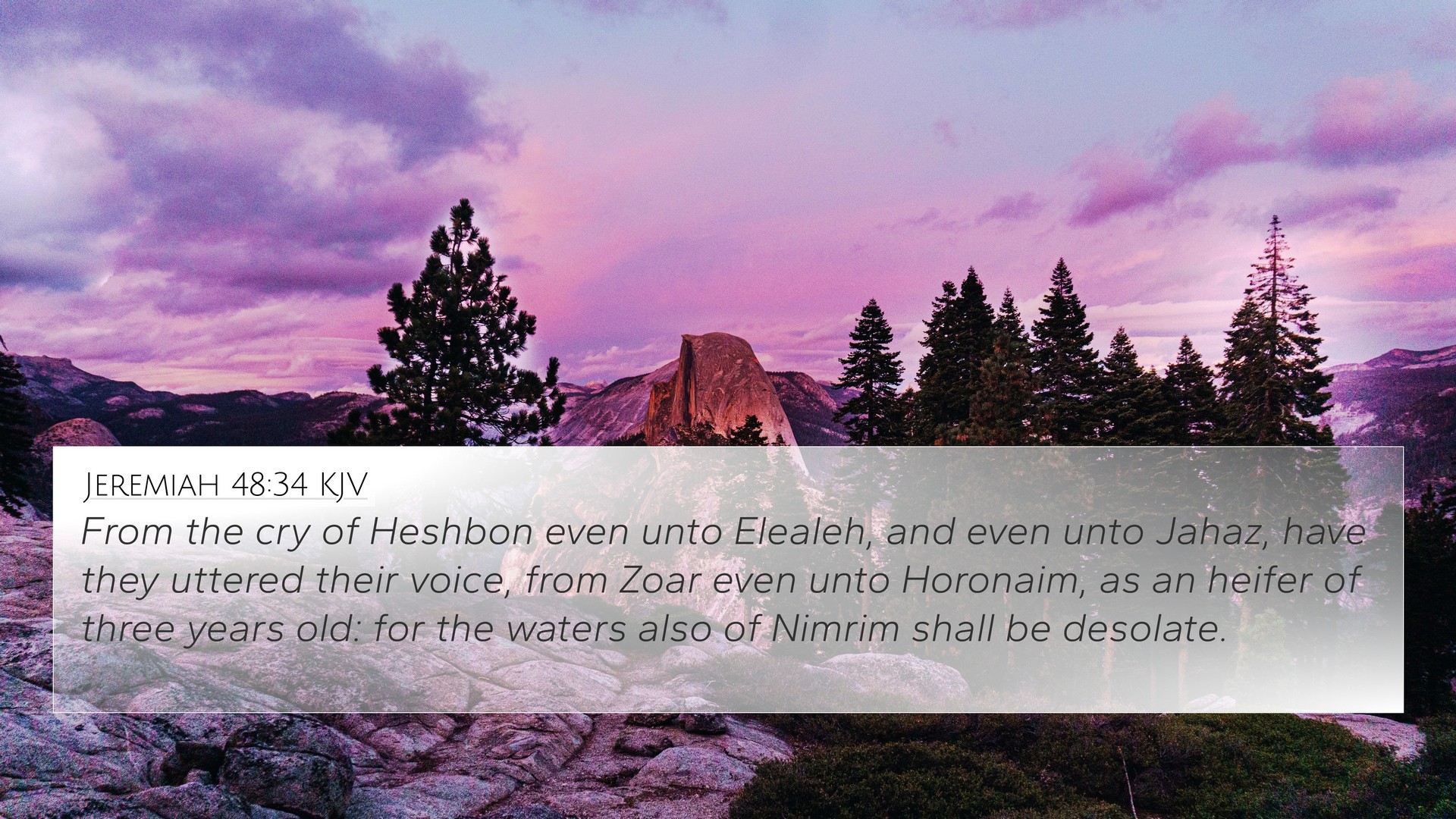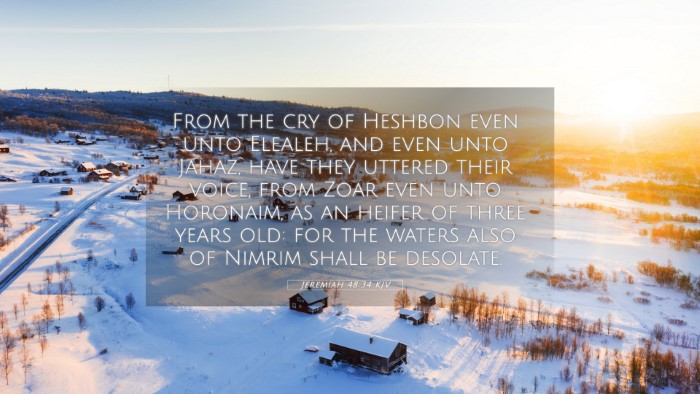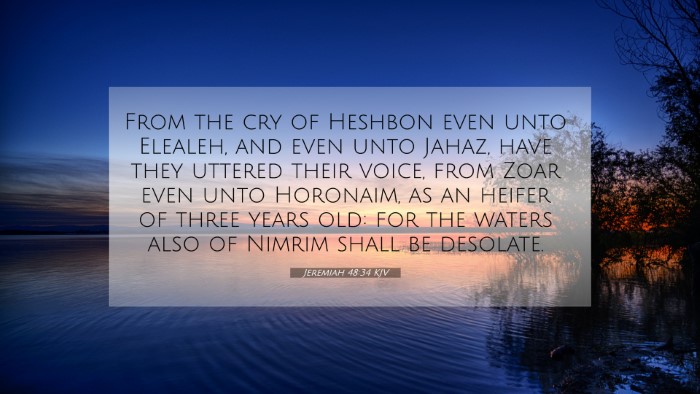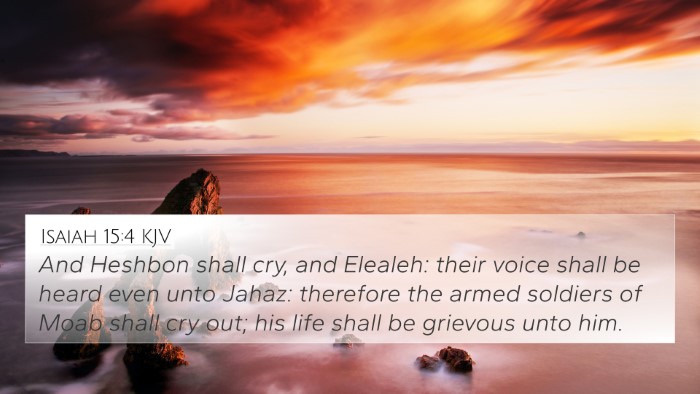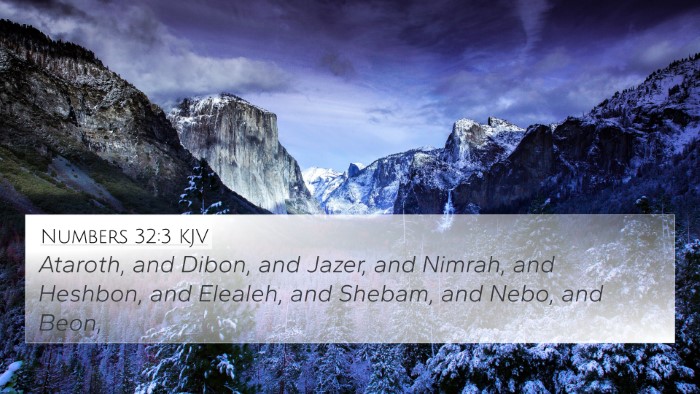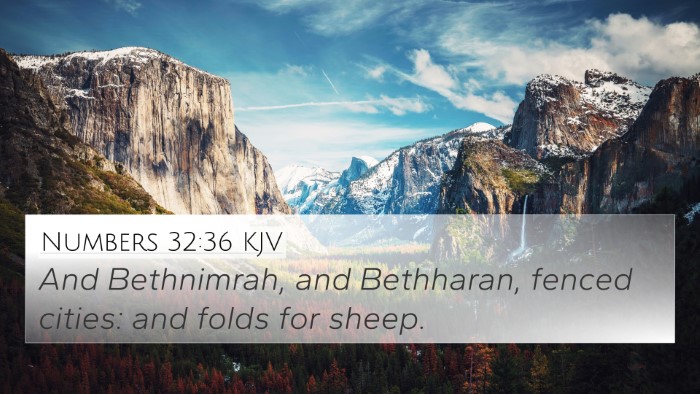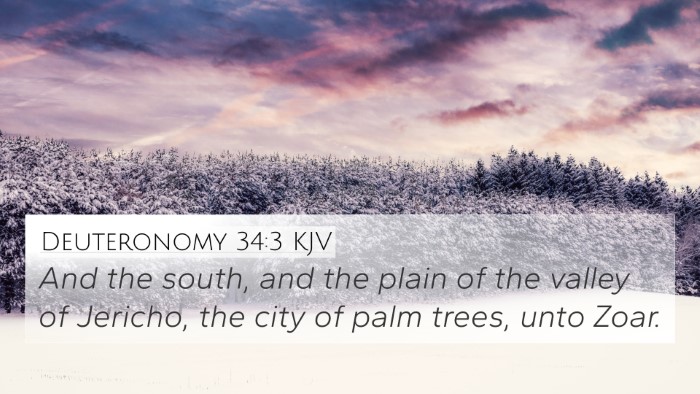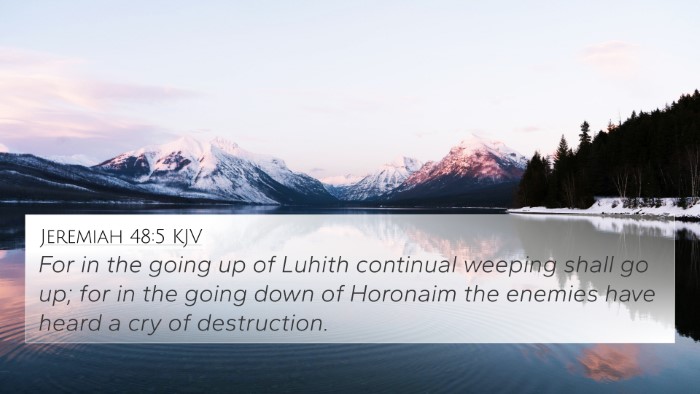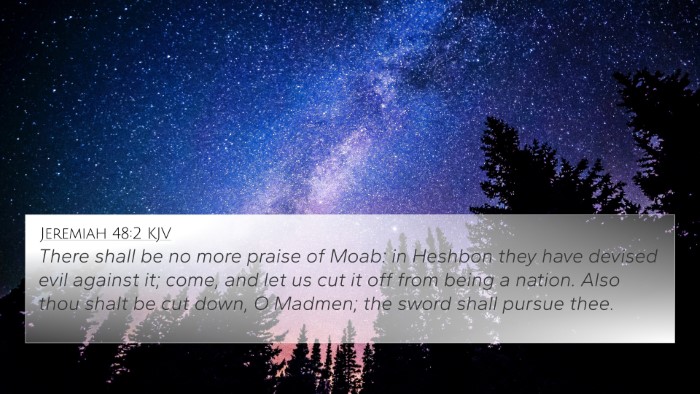Understanding Jeremiah 48:34
Jeremiah 48:34 states: "From the cry of Heshbon even unto Elealeh, and even unto Jahaz, have they uttered their voice, from Zoar even unto Horonaim, as a heifer of three years old: for the waters also of Nimrim shall be desolate." This verse is a poignant declaration marking the seriousness of Moab's impending doom, expressing her desperate situation through a vivid portrayal of her voice rising in lamentation.
Summary of Meaning
This verse depicts the lamentation of Moab regarding its destruction and dire circumstances as prophesied by Jeremiah. The imagery of cities such as Heshbon and Elealeh enhances the sense of urgency and devastation that the Moabites are experiencing. The use of a "heifer of three years old" serves as a metaphor for the maturity and strength that is now turned into helplessness.
Insights from Public Domain Commentaries
-
Matthew Henry explains that this lamentation signifies the totality of Moab’s grief and reflects the broader consequences of sin and rebellion against God. He emphasizes the waves of desolation described as a fitting response to their arrogance and idolatry.
-
Albert Barnes elaborates on the geographical references, indicating how they symbolize the perimeter of Moab's territory. He suggests that the enumeration of these places serves to intensify the sense of loss as Moab recognizes the extinction of their once-vibrant cultural and geographical identity.
-
Adam Clarke highlights the figurative significance of the "heifer" reference, suggesting this is emblematic of Moab’s strength and prosperity that has now been turned into a state of mourning and despair. Clarke sees this as not just physical destruction but also spiritual emptiness.
Comparative Bible Verse Analysis
Understanding Jeremiah 48:34 requires referencing other scriptural passages that speak to the themes of destruction and divine judgment. Below are cross-references that provide deeper insights into this verse's implications:
- Isaiah 15:1-9: Similar themes of judgment against Moab and lamentation can be found, illustrating the scope of divine wrath on the nations.
- Lamentations 2:15-16: This passage reflects the sorrow of a people devastated by calamity, drawing parallels to the cries of Moab.
- Ezekiel 25:8-11: Another prophetic declaration concerning Moab indicates God's enmity towards their pride.
- Jeremiah 48:1-2: These earlier verses set the stage for the lamentation, providing context for Moab's downfall.
- Isaiah 16:7: The emotional response of Moab is captured here, addressing their sorrow and grief in exile and oppression.
- Amos 2:1: This passage critiques the transgressions of Moab, forming a foundation for the expressions of lament we see in Jeremiah.
- Matthew 11:21: Although not directly about Moab, this verse reflects on cities which will face judgment, illustrating a thematic connection to the consequences of rejection and sin.
- Revelation 18:6-8: The ultimate judgment of nations, which parallels Moab’s fate, relates to the finality of God’s justice as portrayed through history.
- Zephaniah 2:8: This verse echoes the anticipated downfall of the surrounding nations, including Moab, reinforcing the prophetic nature of Jeremiah’s declaration.
- 2 Kings 3:10: Captures the military distress faced by Moab, serving as a historical backdrop to the prophetic voices of Jeremiah and others.
Thematic Bible Verse Connections
The events surrounding Moab’s judgment also connect thematically with various elements throughout Scripture regarding divine retribution, sin, and redemption. This thematic exploration aids in understanding the broader narrative of God’s justice as it applies to nations and individuals alike.
Key Themes and Takeaways
- God’s Judgment: The certainty of divine judgment on nations that turn against Him.
- Lamentation and Mourning: The profound sorrow that comes in the wake of divine retribution.
- Geographic Symbolism: The significance of places used within the context of judgment and lament as they connect to the identity of the people.
- Human Helplessness: The transformation of strength into vulnerability, particularly seen in the metaphor of the heifer.
- Consequences of Idolatry: Highlights the consequences faced by Moab due to their abandonment of YHWH for other gods.
Inter-Biblical Dialogue
Understanding Jeremiah 48:34 invites a broader dialogue involving the connections between the Old and New Testaments. For instance, parallels can be drawn between the prophetic denunciations found in the Old Testament and the teachings of Jesus about judgment and repentance, thereby enriching the reader's grasp of the biblical narrative.
Tools for Bible Cross-Referencing
Utilizing tools for cross-referencing can greatly enhance one’s study of this verse, enabling a deeper engagement with the themes and messages being conveyed. Some recommended methods include:
- Utilizing a Bible concordance to locate keywords and their related passages.
- Employing a cross-reference Bible study guide to trace themes across the canon.
- Implementing Bible reference resources which categorize verses thematically or geographically.
- Exploring cross-referencing Bible study methods within small group settings for collaborative insights.
- Using a comprehensive Bible cross-reference system to create a network of related passages around a central theme.
Conclusion
The study of Jeremiah 48:34 provides critical insights not only into the fate of Moab but also into the overarching narrative of divine justice in Scripture. By utilizing various tools and methods of cross-referencing, readers can uncover a rich tapestry of meaning that connects this verse to broader biblical themes, enhancing both personal study and public proclamation.
